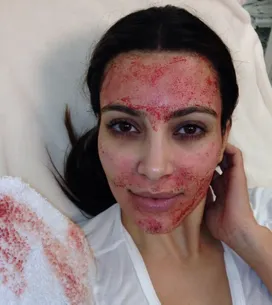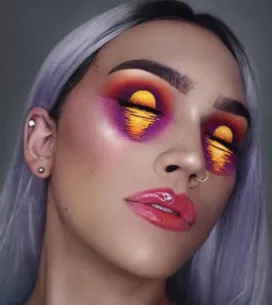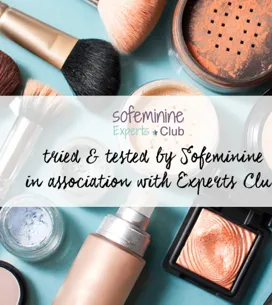We know we're supposed to cover up when the sun puts his hat on but we can't help ourselves. The minute the clouds part, we Brits are rushing out to top up our tans...
Requiring sunburn treatment is almost inevitable for any Brit abroad and a good after sun skin care regime is as important as your factor 30!
Even the darkest of skin tones can suffer from sunburn. Treatment for sun burnt skin can vary so we've put together our after sun skin care guide to help you provide for your sun kissed (make that burnt) skin.
We want you to come back from holidays looking golden and gorgeous - not Lobster red and peeling.
We've sought some advice from expert dermatologist, Dr Joëlle Sébaoun and health writer, Rachel Newcombe, author of Skin Cancer and Sun Safety, The Essential Guide (Need2Know Books, £8.99).
Read on for our after sun skin care and sunburn treatment advice...
Sunburn is a sign that the skin has been damaged." Says Rachel Newcombe, in her book Skin Cancer and Sun Safety.
"It's initially painful, inflamed and red, then the damaged skin peels away. But although the damaged layer is gone, the skin damage remains and can build up problems for the future".
What are the different stages of sunburn?There are different types of sunburn and different stages:
> In the first stage your skin becomes golden
If all goes well, your skin will adapt itself to the dose of UV rays it's being subjected to, your skin will thicken and the melanin will work to darken your skin: you're getting a tan!
> Your skin reddens
Your skin starts to turn red but you may not notice at first. Your skin starts to become sensitive to the touch.
> Your skin becomes darker or purplish red.
You're in pain. Your skin is swollen (an oedematous reaction) and sore. The colour is very vivid and the contrast between burnt and non-burnt skin is very apparent.
> At the final stage your skin is red and blisters appear.
You're burnt. Your skin will probably start to blister and peel. Your skin is agony even when not being touched. Seeking professional help from a pharmacist or doctor (depending on the severity) is advised.
What about blisters?
If one or two blisters appear after being in the sun, you've really overdone it! Or perhaps you're on a medication that makes you more sensitive to the sun, some medication can make you allergic to sunlight.
When your doctor prescribes new medication, be sure to ask if it can cause photosensitivity.
Blisters are caused by a second degree burn and the skin will shed eventually (peel).What to do if you have a blisterAccording to the NHS, you should NEVER burst a blister as the fluid inside is protecting you from infection.
As the blister heals the fluid will be reabsorbed into your body and the skin on top will peel off.
Cool compresses will help to alleviate the pain as will taking anti-inflammatories such as Ibuprofen.
If the blister becomes red, hot, filled with pus, or painful then medical advice should be sought, because treatment for possible infection may be needed.
You've come back from the beach and your skin is itchy from the salt water and sand, and feeling tight from the wind exposure. It's time to feed and water your skin!
Don't scrub yourself
"Don't use any harsh soaps." Says Dr Joëlle Sébaoun, "Take a short, cool shower with a soft soap."
Let your skin settle for a couple of days before exfoliating. Once any initial burn has worn off exfoliating will actually help you maintain and prolong your tan.
Use a good moisturising after sun
To prevent redness and oedemas make sure you moisturise. Pharmacists (try Boots) will be able to suggest a suitable cream or lotion if you're not sure.
"For instant relief, keep your after sun cream in the fridge", says SoFeminine Editor, Anna-Belle Woollcott.
If you have a burn or blisters, your pharmicist will also be able to advise you. Do not be tempted to pop your blisters.
If you are sunburnt, you need a soothing cream such as an anti-inflamatory cream with hydrocortisone.
Hydration
Drinking plenty of water is the key. As long as you aren't properly sunburnt, good hydration will make your skin soft and supple.
Drink a LOT of water - make sure you get at least 2litres a day. Sweating, drinking alcohol and sun bathing all deplete your hydration levels making you skin appear dry and dull.
If you notice yourself burning, get out of the sun! Immediately!
Seek shade
Once in the shade, spray your skin with cold water to cool and gently pat dry. Do not apply product straight away.Cover upIf you're anything like us you might be tempted to continue tanning the "seemingly" unaffected areas - don't!
You'll need to give your skin at least a 24 hour reprieve from the sun's rays by staying covered up or staying indoors. Calm the burn "Just like when you have a normal burn, you can cool the affected parts of your body using cool water, cold compresses, etc." advises Dr Joëlle Sébaoun.
Try taking a cool shower or bath. Salt water will dehydrate your skin further so stay away from the sea until the next day and only venture in after dark to avoid more over exposure - same goes for cholorinated pools.
"[Aftersun lotions are] not just a product with a fancy name" says Rachel Newcombe in her Skin Cancer and Sun Safety book, "they do serve a purpose and the products are carefully formulated for use after sun exposure."Hydrate from the inside outReplace lost fluids by drinking plenty of water. Aim for a minimum of two litres of water a day. A hydrated body can repair itself much quicker so your burn will become tan faster if you keep drinking water and steer clear of alcohol and caffeine.
Repair
Hydrate from the outside too. Applying aftersun and gentle moisturisers will help to keep the moisture in your skin longer.
You can use repairing products that contain synthesized hyaluronic acid. This active ingredient helps with absorption and hydration of the skin.
Your skin is organised into layers held together by collagen and elastin fibres: in the connective tissues are spaces for water and naturally occurring hyaluronic acid, an elastic and gelatinous compound that is involved with tissue repair.
When your skin is burnt hyaluronan (hyaluronic acid) cannot function properly leading to skin damage and premature ageing! Exfoliate - gentlyAs you start to peel, gently buff your skin with a gentle exfoliant or a body brush. This will encourage the skin to shed dead layers and reveal the new, tanned, skin underneath.
Don't use anything too harsh or brush too aggresively as this could cause more blistering and increase the chance of infection. You should never exfoliate badly burnt skin so wait a few days before you start.
Exfoliation should not hurt - be gentle.
Why do we need to protect ourselves from the sun?
Let's get one thing straight, the sun is our friend. Without the sun, we'd all be depressed. Our whole body actually needs sunlight because it's good for our mental and physical health.
"For example, our bodies make Vitamin D from sunlight," says dermatologist, Dr Joëlle Sébaoun. "Without it, we'd suffer from rickets, osteoporosis and fatigue."
But the sun is also dangerous...Skin cancer on the rise in the UKTanned skin has been fashionable since the 50s. Cancer Research UK reported that over the past thirty years, skin cancer cases have increased more rapidly than any other form of cancer in the UK.
"We know that people from all areas of the UK take advantage of cheap flights to have holidays in hot climates." Dr Julie Sharp of Cancer Research UK told The Daily Mail,
"And our surveys have shown that an alarmingly high number of holiday-makers aim to come home with a suntan at any cost - even if it means getting burnt.
"But sunburn doubles the risk of malignant melanoma and the kind of sunbathing binges that happen when people go abroad and bake on the beach are particularly dangerous."
Unusually middle class women are more likely to suffer from skin cancer than working class women or those with lower incomes. However, Cancer Research estimates that ALL women have a 1 in 60 chance of developing a malignant melanoma in their lifetime.
With statistics like these, protecting ourselves from the sun is an absolute must.
What are the effects of ultra-violet rays?
Dermatologist Dr Joëlle Sébaoun says "The sun bombards us with UV rays: ultraviolet A and B."
Ultraviolet A rays (UVA) pass through the skin's epidermis (top layer) and as they burn can cause DNA damage.
Ultraviolet B rays (UVB) make it all the way to the dermis (the middle layer of the skin) causing a true sunburn!
"A first degree burn is if it just turns red," she explains "and a second degree burn is when it blisters."
If we don't moderate our sun exposure, our skin can show signs of early ageing through wrinkles and melasma (age or sun spots). Not to mention the damage the sun can do to our eyes. Wearing UV protective sun glasses is a must!
Don't be mistaken into thinking that the sun's UV rays are only dangerous at the beach in summertime. In the UK, traditionally cooler northern counties have some of the highest incidents of skin cancer! It can get you even on a cloudy day!
The sun's strength depends on the latitude (the sun is stronger in the tropics), the altitude (UVs are greater at high altitudes), the time of day (the sun is at its highest at noon when its rays are vertical), and the season (the sun is weaker in winter).
What's my skin type Blondes and brunettes tan differently.
Lighter skin (usually associated with blonde hair) doesn't produce as much melanin as brunettes' skin. Melanin is the pigment made by our skin cells that gives it it's particular color.
Melanin is the first of our skin's natural protection. Melanin is found in the skin, but also in body hair, in eye membranes and the hair on our heads.
It's melanine that determines our eye colour, our hair colour and our skin colour.
Quantities of melanin vary from person to person, depending on their heredity.Skin types are divided into six phototypes, using the Fitzpatrick Skin-Type Chart.How to work out your skin typeAnswer the questions below then tot up your scores (marked along the top) to give you your final result:
How to work out your skin type
Answer the questions below then tot up your scores (marked along the top) to give you your final result:
Genetics
| Score | 0 | 1 | 2 | 3 | 4 |
| Eye colour | Light blue, grey, green | Blue, grey, green | Blue | Brown | Very dark brown, black |
| Natural hair colour | Sandy red | Blonde | Dark blonde, brown, chestnut | Dark brown | Black |
| Skin colour (unexposed areas) | Pinkish | Very pale, almost white | Pale with a beige-ish tint | Olive, light brown | Dark brown |
| Freckles | Many | Several | Few | Incidental | None |
Score....
Reaction to the sun
| Score | 0 | 1 | 2 | 3 | 4 |
| What happens when you stay in the sun too long? | Always burns, painful redness, blistering, peeling | Always burns, mild blisters, peeling | Burns, mild peeling | Rare burns | Never burns |
| Do you tan? | Never | Seldom | Sometimes | Often | Always |
| How brown do you get? | I don't tan | Light tan | Medium tan | Dark tan | Very deep tan |
| Is your face sensitive to the sun? | Very sensitive | Sensitive | Normal | Very resistant | Never had a problem |
Score....
Tanning
| Score | 0 | 1 | 2 | 3 | 4 |
| When did you last tan (sun bed or natural sun) | More than 3 months ago | 2-3 months ago | 1-2 months ago | Less than a month ago | Less than 2 weeks ago |
| Does your tan develop several hours after exposure? | Never | Seldom | Sometimes | Often | Always |
Score....
If you scored 0-6 points
| Type I |
You can't get a natural tan so your best bet is a gradual tan moisturiser for a subtle and natural-looking fake tan.
If you scored 7-13 points
| Type II |
You'll find it very difficult to achieve a good natural tan so you should try a good instant fake tan or a developing fake tan.
If you scored 14-20 points
| Type III |
Though you can achieve a decent natural tan, you can top this up with a tan prolonger or a shimmering moisturiser (try dry oil but only after the sun has gone down!)
If you scored 21-27 points
| Type IV |
You'll tan relatively easily so you don't need much help. Make sure you look after your skin with a good aftersun and use a tan prolonger to maintain your glow.
If you scored 21-27 points
| Type V |
Your tan doesn't need any help. Keep a good coco butter-based moisturiser (such as Palmers) on hand to make sure your skin stays hydrated and glowing.
If you scored 28-34 points
| Type VI |
Your skin is naturally gorgeous but can suffer from dryness following exposure to the sun. A good coco butter-based moisturiser (such as Palmers) is essential for keeping your tan glossy and lush.

















